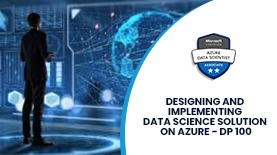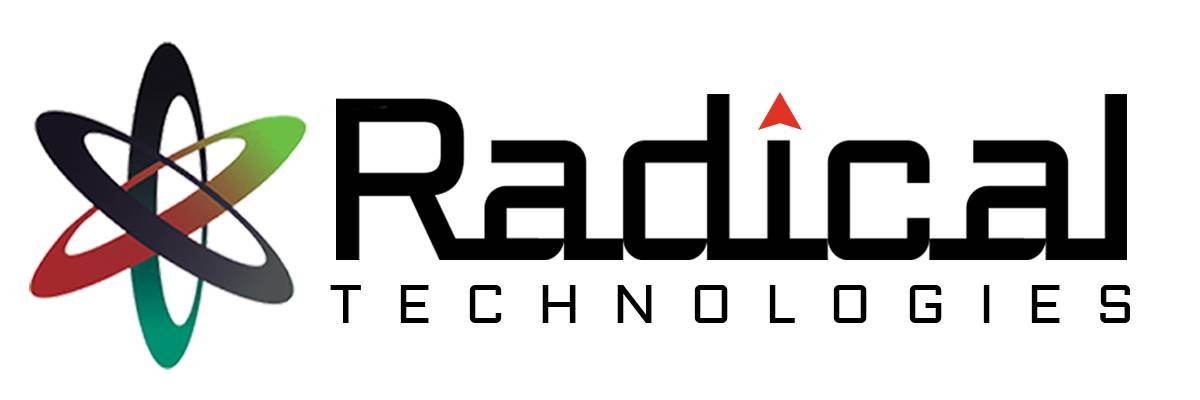- Home
- About Us
- Courses
- Combo Courses
- Programming Combo Courses
- Non Programming Combo Courses
- Linux & Cloud Combo
- Linux & DBA Combo
- AWS & Devops Combo
- Salesforce Combo
- Azure Admin Combo
- Azure Cloud & Azure Devops Combo
- Tableau Informatica Combo
- Power BI Informatica Combo
- Power BI & MSBI Combo
- Salesforce Manual Testing Combo
- Salesforce Tableau Combo
- Data Analytics Combo
- MCSA Azure Combo
- Powerplatform Combo
- ADF & Power BI Combo
- BA & Tableau Combo
- PG Diploma
- Online Schedule
- Offline schedule
- Job Openings
- Certifications
- Contact Us
DESIGNING AND IMPLEMENTING DATA SCIENCE SOLUTION ON AZURE – DP 100

1732 Satisfied Learners
DESIGNING AND IMPLEMENTING DATA SCIENCE SOLUTION ON AZURE – DP 100
Duration of Training : 60 hrs
Batch type : Weekdays/Weekends
Mode of Training : Classroom/Online/Corporate Training
Why Radical Technologies
Design and prepare a machine learning solution
Design a machine learning solution
– Determine the appropriate compute specifications for a training workload
– Describe model deployment requirements
– Select which development approach to use to build or train a model
Manage an Azure Machine Learning workspace
– Create an Azure Machine Learning workspace
– Manage a workspace by using developer tools for workspace interaction
– Set up Git integration for source control
Manage data in an Azure Machine Learning workspace
– Select Azure Storage resources
– Register and maintain datastores
– Create and manage data assets
Manage compute for experiments in Azure Machine Learning
– Create compute targets for experiments and training
– Select an environment for a machine learning use case
– Configure attached compute resources, including Apache Spark pools
– Monitor compute utilization
Explore data and train models
Explore data by using data assets and data stores
– Access and wrangle data during interactive development
– Wrangle interactive data with Apache Spark
Create models by using the Azure Machine Learning designer
– Create a training pipeline
– Consume data assets from the designer
– Use custom code components in designer
– Evaluate the model, including responsible AI guidelines
Use automated machine learning to explore optimal models
– Use automated machine learning for tabular data
– Use automated machine learning for computer vision
– Use automated machine learning for natural language processing (NLP)
– Select and understand training options, including preprocessing and algorithms
– Evaluate an automated machine learning run, including responsible AI guidelines
Use notebooks for custom model training
– Develop code by using a compute instance
– Track model training by using MLflow
– Evaluate a model
– Train a model by using Python SDK
– Use the terminal to configure a compute instance
Tune hyperparameters with Azure Machine Learning
– Select a sampling method
– Define the search space
– Define the primary metric
– Define early termination options
Prepare a model for deployment
Run model training scripts
– Configure job run settings for a script
– Configure compute for a job run
– Consume data from a data asset in a job
– Run a script as a job by using Azure Machine Learning
– Use MLflow to log metrics from a job run
– Use logs to troubleshoot job run errors
– Configure an environment for a job run
– Define parameters for a job
Implement training pipelines
– Create a pipeline
– Pass data between steps in a pipeline
– Run and schedule a pipeline
– Monitor pipeline runs
– Create custom components
– Use component-based pipelines
Manage models in Azure Machine Learning
– Describe MLflow model output
– Identify an appropriate framework to package a model
– Assess a model by using responsible AI guidelines
Deploy and retrain a model
Deploy a model
– Configure settings for online deployment
– Configure compute for a batch deployment
– Deploy a model to an online endpoint
– Deploy a model to a batch endpoint
– Test an online deployed service
– Invoke the batch endpoint to start a batch scoring job
Apply machine learning operations (MLOps) practices
– Trigger an Azure Machine Learning job, including from Azure DevOps or GitHub
– Automate model retraining based on new data additions or data changes
– Define event-based retraining triggers
Learn Designing and Implementing Data Science Solution on Azure – DP100 Course in Pune with Training, Certification & Guaranteed Job Placement Assistance!
Online Batches Available for the Areas
Ambegaon Budruk | Aundh | Baner | Bavdhan Khurd | Bavdhan Budruk | Balewadi | Shivajinagar | Bibvewadi | Bhugaon | Bhukum | Dhankawadi | Dhanori | Dhayari | Erandwane | Fursungi | Ghorpadi | Hadapsar | Hingne Khurd | Karve Nagar | Kalas | Katraj | Khadki | Kharadi | Kondhwa | Koregaon Park | Kothrud | Lohagaon | Manjri | Markal | Mohammed Wadi | Mundhwa | Nanded | Parvati (Parvati Hill) | Panmala | Pashan | Pirangut | Shivane | Sus | Undri | Vishrantwadi | Vitthalwadi | Vadgaon Khurd | Vadgaon Budruk | Vadgaon Sheri | Wagholi | Wanwadi | Warje | Yerwada | Akurdi | Bhosari | Chakan | Charholi Budruk | Chikhli | Chimbali | Chinchwad | Dapodi | Dehu Road | Dighi | Dudulgaon | Hinjawadi | Kalewadi | Kasarwadi | Maan | Moshi | Phugewadi | Pimple Gurav | Pimple Nilakh | Pimple Saudagar | Pimpri | Ravet | Rahatani | Sangvi | Talawade | Tathawade | Thergaon | Wakad


